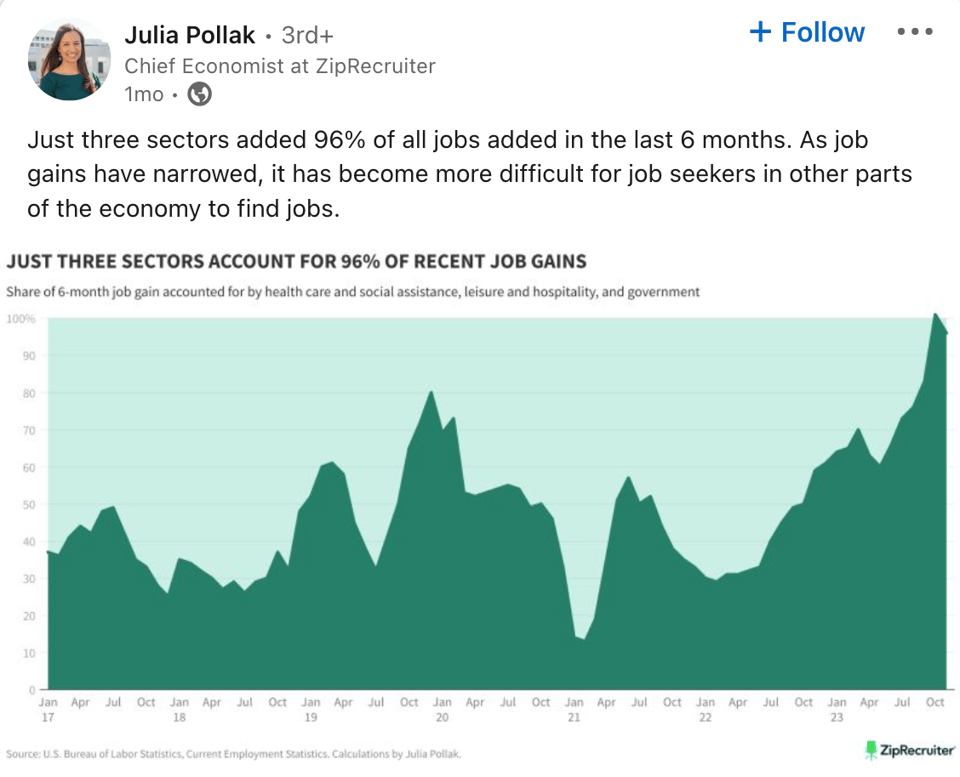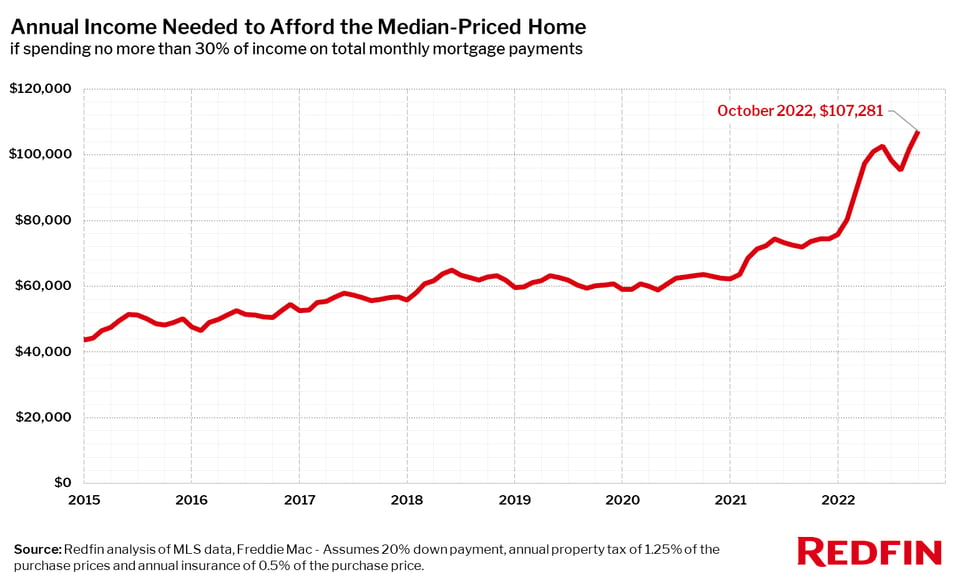#1- Where are all these new jobs?
“Water water everywhere and not a drop to drink.”
This newsletter may be a shorter one- it’s the first part of a story that’s going to take another week or two to report at my current pace. Today’s question:
#1- Where the fuck are all these new jobs?
The youth of America, including myself, feel like we are going insane because on one hand, we are being told that there are tons of new jobs, but everybody we know is struggling to find worthwhile work. So what is actually happening?
Let’s say you’re a part of my cohort. You graduate college on time, and you’re 22-24 years old, you have your degree. You start applying to jobs in your field, and you:
A) find there’s way less of them than you expected
B) and they’re harder to get than you anticipated
And at the same time you’re being buffeted by two different sets of headlines. That the jobs market is good, and unemployment is low. And at the same time, there’s a ton of layoffs happening. Most notably in tech, but also in publishing and entertainment. I feel like I’m being told over and over that it’s a good time to be a worker, but then whenever I start fighting to get a career job, I really struggle. So what’s actually going on?

A key Biden argument for re-election is that he’s been a great jobs president. And on the numbers, he’s right. Biden doesn’t have great polling when it comes to the economy, but that seems to be mostly driven by high prices and inflation, not his effect on the job market. According to Gallup, 57 percent of Americans think it’s “a good time to find a quality job”. Which isn’t quite at the pre-pandemic level of 68 percent, but sure isn’t bad. That’s higher than it ever was the entire time Obama was in office (it was 33% in January of 2008, and 50% in January of 2017).
The economy added 216,000 jobs in December of 2023 according to the U.S. Bureau of Labor Statistics, largely in Private Education and Health Services (74k jobs), Government Work (37k local government jobs, 7k federal government jobs), and Leisure and Hospitality (40k). That’s consistent with overall trends- November showed growth in the same sectors. According to Julia Pollack, ZipRecruiter’s chief economist, those three sectors accounted for 96% of recent job gains. Everything else stagnated.

(to be transparent, I only found that post because of this medium article by Amanda Claypool)
So there are jobs! They’re basically only in three sectors but they are jobs. And how good are these jobs anyway?
According to Data USA, a website that indexes and summarizes government data, the average worker who works in Health Care and Social Assistance makes 60k a year. A large portion of those workers are registered nurses, with an average salary of around 71k a year. And they make way more than the next two largest groups, Nursing Assistants, who make roughly 28k, and Personal Care Aides, who make roughly 25k a year.
Finding the wages for government workers was less easy. Data USA has a category called ‘Public Administration’ which includes federal and state employees except for Postal Service Workers and public school staff. Their average salary was 70k a year. People who worked in ‘Educational Services’ meanwhile, made an average salary of 50k. It seems safe to say that G-men and women made around 50-70k, depending on what sector they worked in.
Lastly, Leisure and Entertainment is a pretty broad category, and also doesn’t have a 1:1 category on USA Data. So let’s take a sub section: 250,000 jobs created in that sector last year were in ‘Food services and drinking spaces.’ Spoiler alert: food service doesn’t pay a lot. The average salary for the Data USA ‘Accommodation and Food Services’ category was a meager 25,569 dollars a year.
Basically, the jobs that were created last year were mostly in the range of 25,000 dollars a year to 70,000 dollars a year. A decent chunk of those are good jobs, at least according to Georgetown University.
This 2022 report from The Georgetown Center on Education and the Workforce defines a 'good job' as “one that meets a minimum earnings standard for economic self-sufficiency.” The exact salary varies from state to state but generally it means a job that pays at least 35k a year. The median good job makes 57k a year. To sum up, these new healthcare and government jobs are largely good jobs, the new food service jobs aren't. Here's the problem though:
In the year of our lord 2023, 57k a year definitely won’t let you buy a home. Actually, 70k a year won’t either! You now need to make 221,592 dollars a year to buy a median-priced home in Los Angeles, according to a 2022 study conducted by real estate firm Redfin.
But that’s Los Angeles, who owns in Los Angeles!? Let’s look at the rest of the country:

Well shit. 57 grand a year hasn’t let you afford a home since 2017! Though, in fairness, 70k could get you there until mid-2021.
So let’s return to the original question. Where the hell are the new jobs? They're only really in government, healthcare, and leisure. And they pay well enough to cover the bills, but not enough for workers to buy homes.
Well I don't want to settle for just paying my bills. I want a future. Do those jobs still exist or am I screwed?
Next time on Mudlark: Where the hell are the white collar jobs? And how are we expected to get them?